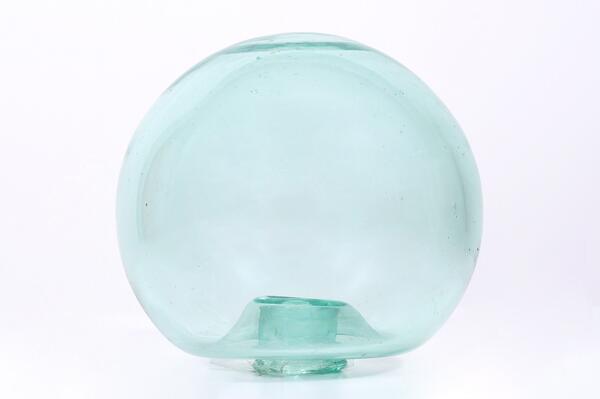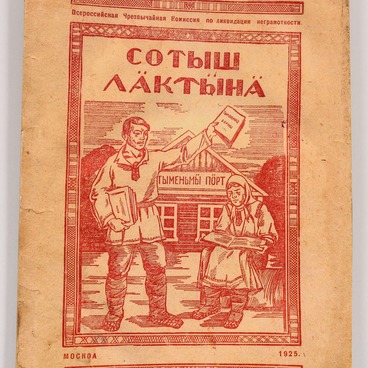In 1941, a new type of weapon entered service with the Soviet Army. It was called the Ampulomet (ampoule thrower) and was used to launch glass projectiles filled with the “KS” incendiary mixture. It had a firing range of 250 to 500 meters. Such weapons were used against enemy fortifications and some types of armored vehicles, including tanks.
The ampoules were filled with a mixture of white phosphorus and sulfur and then sealed. When an ampoule broke down, the substances would react with air and catch on fire. One liter of such a mixture created a flame of up to 1,000 °C that would burn for about three minutes. This flame could even burn underwater and could only be extinguished with sand or copper sulfate.
The National Museum of the Republic of Mari El houses an AK-1 (AS-1) ampoule designed for being used with the “KS” incendiary mixture. It was manufactured at the “Krasny Steklovar (Red Glass Maker)”, located in the village of the same name in the Morkinsky district of the Mari Autonomous Soviet Socialist Republic. Before the Bolshevik Revolution, it was called the Kuzhersky glass factory. The company was founded in 1857 by Peter Mestnikov, a Kazan merchant of the first guild. Later, the owners of the Kuzhersky factory changed, and the last of them was Yakov Khokhryakov. He managed the enterprise from 1904 until the February Revolution of 1917. After that, he closed the factory, sold the property, and moved to Kazan.
The glass-blowing production resumed in 1918: by this time, the factory had been nationalized and had become state property. Three years later, it was renamed “Krasny Steklovar”. In 1929, the workshop was connected to electricity, and new semi-automatic bottle production equipment was installed.
During the Great Patriotic War, the “Krasny Steklovar” factory produced anti-tank ampoules, incendiary bottles, cans, lamps, and window glass. In the 1950s, the factory was converted to produce triangular vials for acetic essence, and later — glass sheets for buildings.
The “Krasny Steklovar” factory worked until the mid-1980s. During perestroika (restructuring), the government decided to reduce the number of small enterprises, and in 1986, the factory was closed.
The ampoules were filled with a mixture of white phosphorus and sulfur and then sealed. When an ampoule broke down, the substances would react with air and catch on fire. One liter of such a mixture created a flame of up to 1,000 °C that would burn for about three minutes. This flame could even burn underwater and could only be extinguished with sand or copper sulfate.
The National Museum of the Republic of Mari El houses an AK-1 (AS-1) ampoule designed for being used with the “KS” incendiary mixture. It was manufactured at the “Krasny Steklovar (Red Glass Maker)”, located in the village of the same name in the Morkinsky district of the Mari Autonomous Soviet Socialist Republic. Before the Bolshevik Revolution, it was called the Kuzhersky glass factory. The company was founded in 1857 by Peter Mestnikov, a Kazan merchant of the first guild. Later, the owners of the Kuzhersky factory changed, and the last of them was Yakov Khokhryakov. He managed the enterprise from 1904 until the February Revolution of 1917. After that, he closed the factory, sold the property, and moved to Kazan.
The glass-blowing production resumed in 1918: by this time, the factory had been nationalized and had become state property. Three years later, it was renamed “Krasny Steklovar”. In 1929, the workshop was connected to electricity, and new semi-automatic bottle production equipment was installed.
During the Great Patriotic War, the “Krasny Steklovar” factory produced anti-tank ampoules, incendiary bottles, cans, lamps, and window glass. In the 1950s, the factory was converted to produce triangular vials for acetic essence, and later — glass sheets for buildings.
The “Krasny Steklovar” factory worked until the mid-1980s. During perestroika (restructuring), the government decided to reduce the number of small enterprises, and in 1986, the factory was closed.



